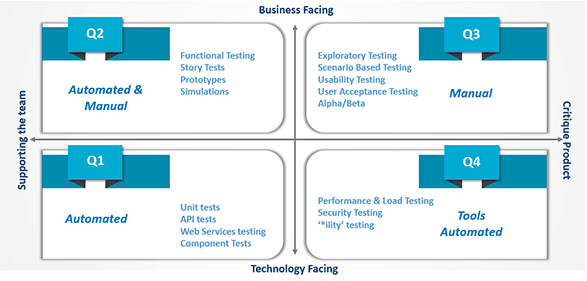If you’ve ever been part of a software development process, then you know that software bugs are inevitable. Even the best development teams aren’t capable of building a bug-free product, mainly because development is a human endeavor that will always have room for improvement. However, that doesn’t mean you shouldn’t care about bugs altogether. While you won’t be able to get rid of them all, you should always strive to reduce their amount to the minimum level.
What does that mean? Well, you probably know what a high number of bugs looks like. A bug-ridden application keeps crashing, has subpar performance, hinders the user experience, and basically renders your software useless. The goal is, then, to reduce the number of bugs to a point where none of those things are present anymore and your software can actually achieve its purpose.
You might be thinking about software testing as the best way to go to achieve that goal. And while you’d be absolutely right to think about it, you’ll need to go a step further and into quality assurance. Let’s see more about that to later review some of the ways we at BairesDev use to prevent the number of bugs in a backlog from increasing and to ensure that new software versions are stable.
The Key to Modern Software Development
Most modern businesses are now in the middle of digital acceleration processes to ramp up their workflows through the implementation of cutting-edge technologies and applications of all kinds. The nature of those processes is inherently dynamic, as companies need quick high-quality digital solutions to meet the increasing and ever-changing demands of their audiences. Unfortunately, that dynamism often means that companies focus their software development efforts on speed to market rather than on quality.
In this context, it’s common for businesses to treat testing as an afterthought or reduce quality to a mere stage in the software development life cycle. Naturally, this ends up having dramatic consequences. Businesses that only worry about quick development end up with buggy products that negatively impact their audiences’ experiences and hurt their reputation. That’s why it’s key to make a shift in the approach to software development services, one capable of bringing quality to the forefront without having to sacrifice quality.
QA is one of the most essential aspects of modern development because it takes software testing a little further by embedding it throughout the development cycle.
So, rather than treating quality as a one-off testing phase, it’s high time to adopt quality assurance practices as a main driver of quality in all digital acceleration processes. QA is one of the most essential aspects of modern development because it takes software testing a little further by embedding it throughout the development cycle. In reality, QA is a superior take on quality, as it uses testing to identify defects and fix them before they have significant consequences and adds a new dimension in which QA engineers analyze and understand how those defects came to be in the first place.
Thus, QA engineers do much more than just guarding the integrity of a particular piece of software – they take a look at the development process to spot vulnerabilities and flaws in order to improve those processes. Thus, a development cycle with QA engineers in it improves over time, as it adjusts itself to provide better results with each new application you develop with it.
That’s precisely the approach we use at BairesDev – by analyzing your custom software development process, we understand which areas need improvement which, ultimately, allows us to build a team that helps your team in being more efficient. In doing that, we help you revamp your process while also preventing you from having to do unnecessary rework on the applications you release.
The Four Quadrants of Agile Testing
At BairesDev we believe in following an approach similar to The Four Quadrants of Agile Testing to ensure best practices that can produce reliable, high-quality software. The Agile Testing Quadrants divide the whole Agile testing methodology into 4 basic quadrants that cover the entire possibilities you get when trying to improve the quality of a software development process.
Here’s what those quadrants look like:

Agile Testing Automation Quadrants
By using those quadrants, we help our teams communicate with each other and we can also better explain how we can effectively work on a product. The quadrants are as follow:
- Quadrant 1: Technology-facing tests to support the team. The main focus is quality code. It involves unit tests, component tests, web services tests, and API tests
- Quadrant 2: Business-facing tests to support the team. The main focus is on business requirements. It’s mostly associated with functional testing, prototyping, and story testing through manual and automated tests.
- Quadrant 3: Business-facing tests to critique the product. The main focus is to gather feedback about the performance of the tests in quadrants 1 and 2. This quadrant is associated with exploratory tests, usability tests, and user acceptance tests, among others.
- Quadrant 4: Technology-facing tests to critique the product. The main focus is on non-functional requirements (performance, maintainability, stability). This quadrant is closely related to performance tests, load tests, security tests, reliability tests, and more.
Any software development process needs to cover these 4 quadrants to ensure the highest quality output. Of course, the quadrants in and by themselves aren’t enough. You’ll also need a team working together closely with the clear goal of achieving the best product quality and ultimately, optimum customer satisfaction. That’s what BairesDev provides you: an experienced team of the Top 1% of tech talent with a strong focus on quality and QA engineers with the proper mentality to help you improve your software development process and reduce bugs to a minimum.
Improve Your Software Development Process
Reducing bugs to a minimum is a task that requires a shift in the approach you have to software development that puts quality assurance at the same level of speed. Organizing the work in such a way that quality assurance and testing are embedded throughout the software development life cycle is the only way in which you can achieve that and see significant improvements in your output.
This is a simple concept to grasp but a hard one to master. That’s why it’s always better to count on the help of a seasoned team of QA engineers to bring those improvements to your processes. At BairesDev, we have seen many teams facing bug-related issues in the past and know of the areas where improvement can be applied to prevent all of these common issues.
We know you’ll need to apply architecture changes, make sure best practices are being implemented, ensure there is high unit testing code coverage, and implement proper code reviews. You’ll also need an existing Continuous Integration / Continuous Deployment pipeline (CI/CD) implemented to work with test automation tools. We understand that all of those things can be challenging to implement, which is why we are here for you with our engineering teams ready to jumpstart your projects on demand. Send us a message and we can get started right away.
Conclusion
In today’s world of digital acceleration, high-quality software is in tremendous demand, yet the rush to market often compromises quality, resulting in buggy software products that disappoint users and damage reputations. To address this issue, businesses must shift their focus to prioritizing quality assurance (QA) throughout the software development life cycle, not only finding and fixing defects but also analyzing and improving underlying processes to prevent recurrence.
The Four Quadrants of Agile Testing provides a comprehensive framework to ensure all aspects of quality are covered, from code and business requirements to performance and maintainability. However, implementing this approach successfully requires a dedicated, experienced team laser-focused on quality and continuous improvement.
At BairesDev, our engineering teams boast the expertise and mentality to optimize your software development process and minimize bugs. From implementing architecture changes and best practices to ensuring robust code coverage and code reviews, we have the experience and tools to help you achieve the highest quality output and ultimate customer satisfaction.
In summary, while bugs are inevitable in software development, their impact can be greatly reduced through a comprehensive QA approach and an experienced, quality-driven team. By making quality a priority throughout development, businesses can build more reliable, satisfying products, strengthening reputations and delivering successful outcomes.







